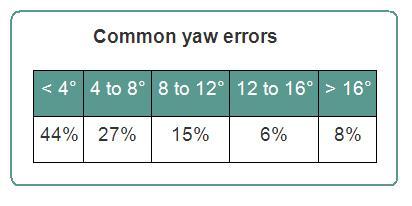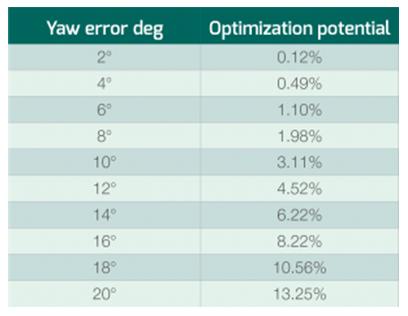The iSpin Monitor is intended for permanent installation on the wind turbines. ROMO Wind says its technology enables wind measurements, which until now have been difficult or impossible to measure with

iSpin Monitor Advanced provides constant measurements and monitoring of all data obtained from iSpin sensors as well as other important measurement parameters.
the current wind measurement equipment for wind turbines. The developer offers two levels of service with the monitors:
- iSpin Monitor Basicensures that the wind-farm operator will never experience static yaw misalignment on the wind turbines. iSpin Monitor Basic continually measures and monitors the average yaw misalignment while ROMO provides an alert if a static yaw misalignment occurs. ROMO expects – based on its testing of a large number of different turbines so far – a wind farm to increase its annual energy production by 1.5 to 2.0% with yaw correction.
- iSpin Monitor Advancedprovides constant measurements and monitoring of all data obtained from iSpin technology as well as other important measurement parameters, enabling the monitoring and a significantly improved insight into local wind conditions and turbine performance. iSpin Monitor Advanced also monitors the presence of possible yaw misalignments. This level provides accurate readings of wind speed, yaw misalignments (static and dynamic), flow inclinations, turbulence intensity, air pressure, nacelle direction, temperature and more
Note that iSpin Basic only collects measurement results and not raw data. It can be upgraded to the Monitor Advanced at any time. ROMO Wind offers iSpin Monitor as an all-in service. ROMO Wind will take care of planning, installation, commissioning, data collection and reporting.
Regarding yaw misalignments
ROMO Wind distinguishes between static – or average – yaw misalignments and dynamic yaw misalignments. The latter is the standard deviation on the static yaw misalignment.
Static yaw misalignments are frequent
ROMO Wind’s measurements on a large number of randomly selected wind turbines show that more than half of all wind turbines demonstrate a significant static (average) yaw misalignments. The table below shows the distribution of the yaw misalignments measured by ROMO Wind. This statistic is updated regularly.

Figure in the table are based on 182 measurement campaigns covering more than 20 turbine types. The figures were last updated: 3/6 2015.
Consequences of static yaw misalignments
Yaw misalignments cause considerable revenue losses and unnecessary loads on the turbines, leading to increased maintenance costs and reduced turbine lifetime. ROMO Wind has through several measurement campaigns shown that the relationship between yaw misalignments and annual energy production loss is related to the reduction of swept area of the rotor. The exact effect depends on the wind distribution but follows a Cos2 relationship for an average annual wind speed of 6 m/s. For lower wind speeds, the production loss is higher, and for higher wind speeds, lower. However, the additional loads from yaw misalignment increase with wind speed.
 If the wind turbines that ROMO Wind has installed iSpin on had been a wind farm and the static yaw misalignment had been corrected to zero, the production would have increased by 1.6%.
If the wind turbines that ROMO Wind has installed iSpin on had been a wind farm and the static yaw misalignment had been corrected to zero, the production would have increased by 1.6%.
Why do static yaw misalignments occur so often?
The high prevalence of yaw misalignments is not the result of the turbine manufacturers or service teams doing a bad job on the wind turbines. The key reason is that the standard equipment on wind turbines today cannot detect yaw misalignments. The technologies for detecting these problems only became commercially available in recent years – not least because of the iSpin Technology.
There seem to be three main reasons why turbines may present yaw misalignments:
- Wind direction sensor issues– If the wind sensor is mounted incorrectly by even a few millimeters, it will have severe consequences on the alignment
- Wind farm site conditions– The off-set defined by the turbine manufacturer has not been adjusted to the installation site’s local conditions, causing a potentially large static yaw misalignment
New disturbances of the wind flow over the nacelle roof – If the nacelle sensors are moved to another position on the nacelle roof or other equipment is mounted on the roof (e.g. aviation lights or nacelle LiDARs), they can severely affect the wind flow around the nacelle, having a negative impact on the function and calibration of the nacelle wind sensor measurements and hence on the turbine control.
ROMO Wind
Filed Under: News, O&M, Sensors




